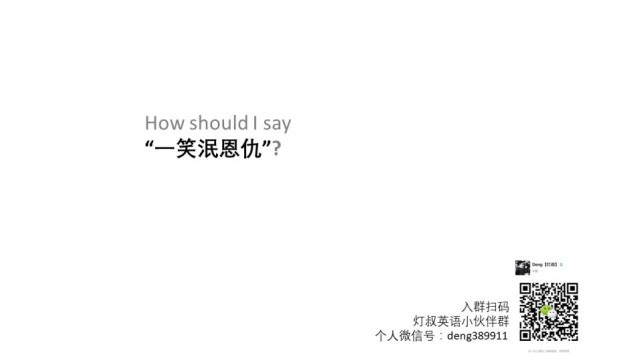2004年9月英语高级口译考试笔试真题+音频+答案
SECTION 3: LISTENING TEST (30 minutes)
Directions: Translate of the f ollowing passage into Chinese and write your version in the correspond ing spa ce in your ANS WER BOOKLET.
France today is no superpower, but French influence in some spheres significant. Nothing has cemented French influence in the world like the decision made by the victorious World War II powers in 1945 to include France as one of the five permanent, veto-wielding members of the Security Council. Until the end of the Cold War, France rarely found itself in disagreement with Britain or the U.S. on major issues. But the U.N. veto today takes on larger significance as France struggles to decide whether it wants to lead the European Union in defiance of American power or in partnership with it.
As America's great media outlets have begun preparing for coverage of the D-Day celebrations, the question of a "grand gesture" by the French toward the American war in Iraq has been raised. Administration officials hint that, perhaps, just perhaps, the French President will use the occasion of France's rescue as an opportunity to square the accounts—to issue a blanket endorsement of America's plan for Iraq's future and throw its support behind the transfer of power looming at the end of the month. France certainly wants the United States to be successful in Iraq at this point. But France seems unlikely to see D-Day as an opportunity to make good on a 60-year-old debt. Beyond nice speeches and some truly fine cuisine, don't expect France to liberate America from Iraq.
SECTION 4: LISTENING TEST (30 minutes)
Part A: Note-taking And Gap-filling
Directions: In this part of the testyou will hear a short talk. You will hear the talk ONLY ONCE. While listening to the talk, you may take notes on the impo rtant po ints so that you can have enough inf ormation to comp lete a gap-filli ng task on a sepa rate ANS WER BOOKLET. You will not getyourANS WER BOOKLET until aft er you have listened to the talk
Many different cultures exist in the world today, and so there are differences in socially acceptable business behavior throughout the world.
In some cultures it is socially ________ (1) to say "No" even when that is the ultimate answer. For example, ________ (2) businesspersons rarely say "No" to each other or to businesspeople from other cultures. But Americans will say no quickly, because they value ________ (3).
Personal ________ (4) points to another difference in culture. In Japan and some ________ (5) American countries business people like to stand ________ (6) together as they talk. They partially judge how close they are to ________ (7) in their business ________ (8) by how physically close they are standing or sitting next to each other. But Americans do not want other people invading their personal ________ (9).
Business cards also have different significance in various cultures. Japanese people take exchanging business cards as an important ________ (10). At a business gathering, they may spend ten to fifteen minutes exchanging cards, discussing each other's ________ (11) and experience, answering questions and ________ (12) each other. But American businesspeople tend to accept ________ (13) cards quickly and then put them into a coat ________ (14) with just a glance.
Ethical behavior in one culture may be ________ (15) in another. For example, in the United States, ________ (16) are both unethical and ________ (17). People who offer and accept bribes can be charged with ________ (18) activity and can be ________ (19) for these crimes. But in other countries, bribes may be a more acceptable or even ________ (20) part of doing business.
Part B: Listening and Translation
1. Sentence Translation
Directions: In this part of the test, you will hear 5 English sentences. You will hear the sentences ONLY ONCE. Af ter you have heard each sentence, translate it into Chinese and write your version in the correspond ing spa ce in your ANS WER BOOKLET.
(1)_________________________________________________________
(2)_________________________________________________________
(3)_________________________________________________________
(4)_________________________________________________________
(5)_________________________________________________________
2. Passage Translation
Directions: In this pa rt of the test, you will hear 2 English passages. You will hear the passages ONLY ONCE. Aft er you have heard each passage, translate it into Chinese and write your version in the correspond ing spa ce in your ANS WER BOOKLET. You may take notes while you are listening.
(1)_________________________________________________________
(2)_________________________________________________________











